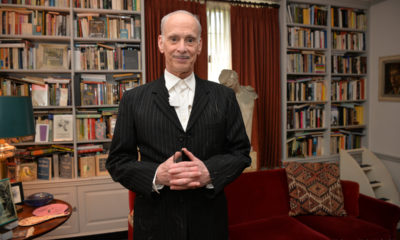Opinions
Veteran Blade features editor recalls all-time best and worst celeb interviews
From loquacious and chatty to boring and condescending, star subjects run gamut
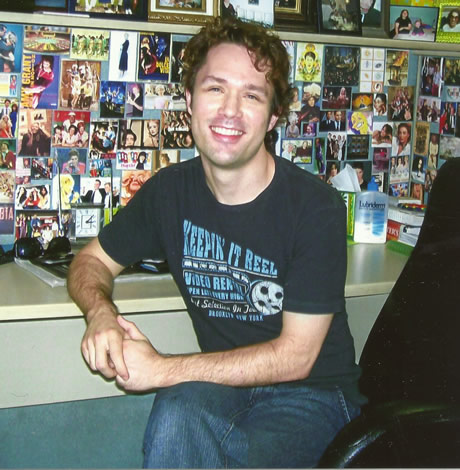
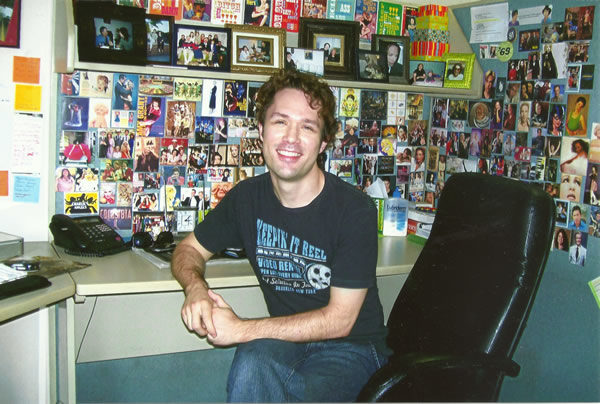
I’m naming names, so get ready.
I came to the Blade in October 2006 as news editor, then became features editor in 2008, which is my title to this day. That’s probably a record, but I have no easy way to verify that.
One small part of my job is interviewing celebrities. It’s tough when it’s somebody you’re not familiar with and you have to research from scratch. It’s super fun when it’s a star you’ve followed for a long time and can go deep and ask interesting, off-the-beaten-path stuff. I work hard to eschew the same handful of questions they’ve been asked nine zillion times before (e.g. to John Waters: “What was Divine like?”). You can geek out and go crazy deep/obscure for a few questions but obviously you don’t want an entire interview of that.
Often the audiences for these pieces are people who follow the subjects avidly already so you want to make it interesting for them as well as the casual fan. Nothing pisses off a fan base faster than a set of questions that sounds like you cobbled them together in 10 minutes after reading the press release and the Wikipedia page.
These are almost always done by phone because rarely is the celeb in D.C. prior to the event that’s bringing them to our region. I only agree to e-mail interviews under extremely rare circumstances because they usually cherry pick which questions they want to answer and there’s no chance to press them if they play coy or evasive. I let Larry Kramer by on a pass because he has severe hearing loss (he was great — we went several rounds of follow-up by e-mail) and Janis Ian, who was on vocal rest.
It’s tough when their handlers have scheduled back-to-back phoners and you only get 15 minutes and have to keep firing like you’re in the lightening round to cram in as much as possible. The celebs don’t give a shit — even under tight time constraints, you’ll sometimes get somebody who’ll ramble on for 10 minutes answering one question, so you’re fucked (I’m looking at you Megan Mullally). You also learn quickly, these people are never your friends; many of them are just good at giving you the temporary illusion that they’re chummy with you. As a mentor of mine used to say, you see how quickly that stops when the column inches are over.
It also sucks when their publicists stay on the line and cut you off just when you’re getting going. In some cases, I get it — some journalists would hog the celeb’s time so somebody has to be the bad cop. I’m greedy with my celeb time but never go crazy long. Thirty-40 minutes is ideal — you can actually breathe a little, give them time to ramble, then pick your most interesting responses to use. You always have to have more prepared than you’ll get to in case they go Bob Dylan on you and give one-word answers. The best situations are when you develop rapport, keep them engaged (typically this kind of thing bores them) and get them riffing way off their press release.
So after 11 years of doing this, I’m giving out my all-time best and worst awards for Blade interviews. We’ll start with the worst.
5. Stand-up legend Margaret Cho (“Mothers’ Day with Margaret” 2013; “Margaret goes ‘psyCHO’ on new tour,” 2015) — perfectly nice lady but not funny in interview mode; like, at all. Makes you feel like she’d rather be doing anything but this.
4. Actress Maria Bello (“Don’t label Maria Bello,” 2015) — didn’t have time for anything much once we got through talking about her book.
3. Andy Cohen (“Deep Talk with Andy Cohen,” 2017) — polite but just didn’t give me much to work with. Very succinct responses delivered in as few words as possible. It was like he couldn’t wait to get off the phone.
2. Singer Natalie Merchant (“Natalie Merchant goes deep,” 2017) — ostensibly polite and decent elaboration but sounded about as excited as a clerk at a D.C. 7-11.
1. Jazz pianist Patricia Barber (“Cerebral jazz,” 2013) — stock answers, kind of a tone of “why would you ask me that”? to every answer that made me feel she thought I was an idiot.
DISHONORABLE MENTION: Rufus Wainwright (“Rufus Wainwright on opera, revisiting his first two albums,” 2018) — Nice enough guy, but we were late getting started, then his handlers cut us off as if the clock had started at the time they were supposed to have called.
Best:
5. Actress Valerie Harper (“Taking on Tallulah,” 5-29-09) — one of the rare ones I got to do in person. Chatty, funny, willing to go anywhere the questions took her — a delight.
4. Singer/actress Patti LuPone (“Reminiscing with LuPone,” 9-8-11) — I was terrified. Miss LuPone does not suffer fools gladly and I’m not a show queen, so I was winging it slightly (but I had read her then-new memoir! You don’t always have time.). The appointed time came. Her husband answers and says sorry, she’s getting her hair done. She called a few hours later and apologized. It was perfect — that mild inconvenience put her more at my mercy, so she wasn’t prickly at all.
3. Figure skater/personality Adam Rippon (“Adam Rippon on new life, loves, memoir, ass and skating in the nude,” 2019) — candid, funny, balked at nothing, not in a hurry and genuinely sweet.
2. Motown legend Mary Wilson (“Mary Wilson shares Motown memories,” 2017) — the Supremes co-founder gleefully went anywhere I led and elaborated without prodding. Miss Ross, of course, has yet to deign us with her presence.
1. Actress Lily Tomlin (“Laughing with Lily,” 2014; “Lily Tomlin on why she’s happy she lost the Emmy this year — and a whole lot more,” 2018) — unsurprisingly, it’s often true that the bigger the name, the more you’re likely to encounter a diva. Tomlin, as many in my field would attest, is the exception. Exceedingly nice, the only celeb to ever make a point of using my name and never in a rush. The ultimate class act A-lister.
HONORABLE MENTIONS: Bruce Vilanch (“Dishing with Bruce,” 2013), Leslie Jordan (“Flamboyantly funny,” 2016; “Character actor Leslie Jordan on his pony obsession, TV hits and misses and dream threesome,” 2019); Salim Gauwloos (“Former Madonna dancer Slam recalls ‘Blond Ambition Tour,’ ‘Truth or Dare’); Dave Koz (“A Dave Koz Christmas,” 2014, “Koz and effect,” 2011), Yvonne Craig (“Holy spandex tights! It’s Batgirl!,” 2015) and Alison Arngrim (“Life on the ‘Prairie,’” 2011).
Opinions
New research shows coming out is still risky
A time of profound psychological vulnerability

Coming out is often celebrated as a joyful milestone – a moment of truth, pride, and liberation. For many LGBTQ+ people, that’s exactly what it becomes. But new research I co-authored, published in the journal Pediatrics this month, shows that the period surrounding a young person’s first disclosure of their sexual identity is also a time of profound psychological vulnerability. It’s a fragile window we are not adequately protecting.
Using data from a national sample of lesbian, gay, and bisexual people, our study examined what happens in the years before and after someone comes out to a family member or a straight friend. We weren’t looking at broad lifetime trends or comparing LGBTQ+ youth to heterosexual peers. Instead, we looked within each person’s life. We wanted to understand how their own suicide risk changed around the moment they first disclosed who they are.
The results were unmistakable. In the year a person came out, their likelihood of having suicidal thoughts, developing a suicide plan, or attempting suicide increased sharply. Those increases were not small. Suicide planning rose by 10 to 12 percentage points. Suicide attempts increased by 6 percentage points. And the elevated risk didn’t fade quickly. It continued in the years that followed.
I want to be very clear about what these results mean: coming out itself is not the cause of suicidality. The act of disclosure does not harm young people. What harms them is the fear of rejection, the stress of navigating relationships that suddenly feel uncertain, and the emotional fallout when people they love respond with confusion, disapproval, or hostility.
In other words, young LGBTQ+ people are not inherently vulnerable. We make them vulnerable.
And this is happening even as our culture has grown more affirming, at least on the surface. One of the most surprising findings in our study was that younger generations showed larger increases in suicide risk around coming out compared to older generations. These are young people who grew up with marriage equality, LGBTQ+ celebrities, Pride flags in classrooms, and messaging that “it gets better.”
So why are they struggling more?
I think it’s, in part, because expectations have changed. When a young person grows up hearing that their community is increasingly accepted, they may expect support from family and friends. When that support does not come, or comes with hesitation, discomfort, or mixed messages, the disappointment is often devastating. Visibility without security can intensify vulnerability.
Compounding this vulnerability is the broader political environment. Over the last several years, LGBTQ+ youth have watched adults in positions of power debate their legitimacy, restrict their rights, and question their place in schools, sports, and even their own families. While our study did not analyze political factors directly, it is impossible to separate individual experiences from a climate that routinely targets LGBTQ+ young people in legislative hearings, news cycles, and social media.
When you’re 14 or 15 years old and deciding who to tell about your identity, the world around you matters.
But the most important takeaway from our study is this: support is important. The presence, or absence of family acceptance is typically one of the strongest predictors of whether young people thrive after coming out. Research consistently shows that when parents respond with love, curiosity, and affirmation, young people experience better mental health, stronger resilience, and lower suicide risk. When families reject their children, the consequences can be life-threatening.
Support doesn’t require perfect language or expertise. It requires listening. It requires pausing before reacting out of fear or unfamiliarity. It requires recognizing that a young person coming out is not asking you to change everything about your beliefs. They’re asking you to hold them through one of the most vulnerable moments of their life.
Schools, too, have an enormous role to play. LGBTQ+-inclusive curricula, student groups, and clear protections against harassment create safer environments for disclosure.
Health care settings must also do better. Providers should routinely screen for mental health needs among LGBTQ+ youth, especially around the time of identity disclosure, and offer culturally competent care.
And as a community, we need to tell a more honest story about coming out. Yes, it can be liberating. Yes, it can be beautiful. But it can also be terrifying. Instead of pretending it’s always a rainbow-filled rite of passage, we must acknowledge its risks and surround young people with the support they deserve.
Coming out should not be a crisis moment. It should not be a turning point toward despair. If anything, it should be the beginning of a young person’s journey toward authenticity and joy.
That future is possible. But it depends on all of us – parents, educators, clinicians, policymakers, and LGBTQ+ adults ourselves – committing to make acceptance a daily practice.
Young LGBTQ+ people are watching. And in the moment they need us most, they must not fall into silence or struggle alone.
Harry Barbee, Ph.D., is an assistant professor at the Johns Hopkins Bloomberg School of Public Health. Their research and teaching focus on LGBTQ+ health, aging, and public policy.
Letter-to-the-Editor
Candidates should pledge to nominate LGBTQ judge to Supreme Court
Presidential, Senate hopefuls need to go on the record
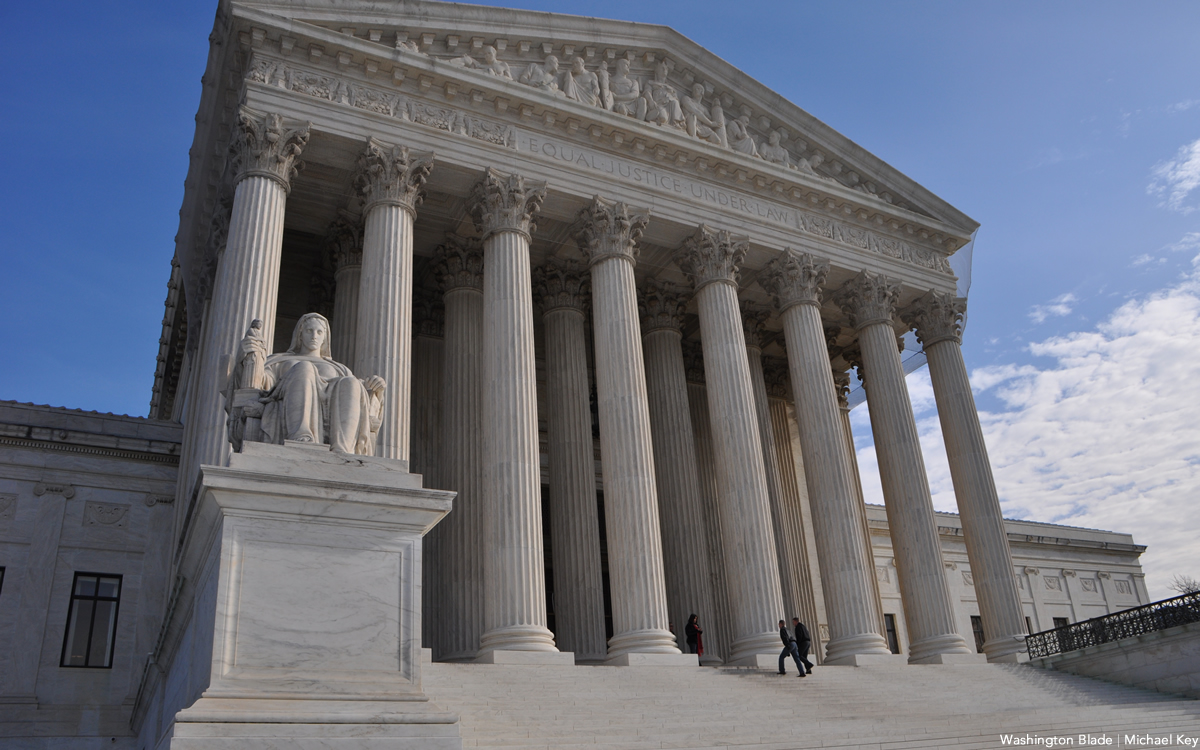
As soon as the final votes are cast and counted and verified after the November 2026 elections are over, the 2028 presidential cycle will begin in earnest. Polls, financial aid requests, and volunteer opportunities ad infinitum will flood the public and personal media. There will be more issues than candidates in both parties. The rending of garments and mudslinging will be both interesting and maybe even amusing as citizens will watch how candidates react to each and every issue of the day.
There is one particular item that I am hoping each candidate will be asked whether in private or in public. If a Supreme Court vacancy occurs in your potential administration, will you nominate an open and qualified LGBTQ to join the remaining eight?
Other interest groups on both sides have made similar demands over the years and have had them honored. Is it not time that our voices are raised as well? There are several already sitting judges on both state and federal benches that have either been elected statewide or approved by the U.S. Senate.
Our communities are being utilized and abused on judicial menus. Enough already! Challenge each and every candidate, regardless of their party with our honest question and see if honest answers are given. By the way … no harm in asking the one-third of the U.S. Senate candidates too who will be on ballots. Looking forward to any candidate tap dancing!
Opinions
2026 elections will bring major changes to D.C. government
Mayor’s office, multiple Council seats up for grabs
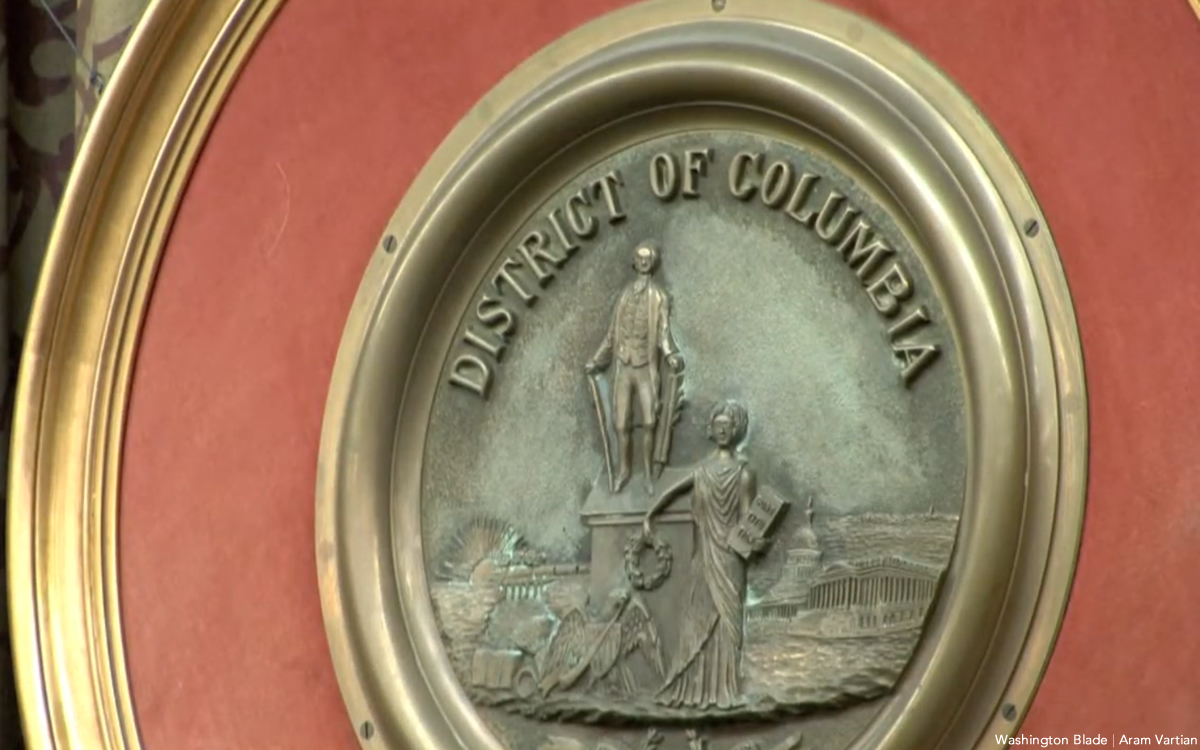
Next year will be a banner year for elections in D.C. The mayor announced she will not run. Two Council members, Anita Bonds, At-large, and Brianne Nadeau, Ward 1, have announced they will not run. Waiting for Del. Norton to do the same, but even if she doesn’t, there will be a real race for that office.
So far, Robert White, Council member at-large, and Brooke Pinto, Council member Ward 2, are among a host of others, who have announced. If one of these Council members should win, there would be a special election for their seat. If Kenyon McDuffie, Council member at-large, announces for mayor as a Democrat, which he is expected to do, he will have to resign his seat on the Council as he fills one of the non-Democratic seats there. Janeese George, Ward 4 Council member, announced she is running for mayor. Should she win, there would be a special election for her seat. Another special election could happen if Trayon White, Ward 8, is convicted of his alleged crimes, when he is brought to trial in January. Both the Council chair, and attorney general, have announced they are seeking reelection, along with a host of other offices that will be on the ballot.
Many of the races could look like the one in Ward 1 where at least six people have already announced. They include three members of the LGBTQ community. It seems the current leader in that race is Jackie Reyes Yanes, a Latina activist, not a member of the LGBTQ community, who worked for Mayor Fenty as head of the Latino Affairs Office, and for Mayor Bowser as head of the Office of Community Affairs. About eight, including the two Council members, have already announced they are running for the delegate seat.
I am often asked by candidates for an endorsement. The reason being my years as a community, LGBTQ, and Democratic, activist; and my ability to endorse in my column in the Washington Blade. The only candidate I endorsed so far is Phil Mendelson, for Council chair. While he and I don’t always agree on everything, he’s a staunch supporter of the LGBTQ community, a rational person, and we need someone with a steady hand if there really are six new Council members, out of the 13.
When candidates call, they realize I am a policy wonk. My unsolicited advice to all candidates is: Do more than talk in generalities, be specific and honest as to what you think you can do, if elected. Candidates running for a legislative office, should talk about what bills they will support, and then what new ones they will introduce. What are the first three things you will focus on for your constituents, if elected. If you are running against an incumbent, what do you think you can do differently than the person you hope to replace? For any new policies and programs you propose, if there is a cost, let constituents know how you intend to pay for them. Take the time to learn the city budget, and how money is currently being spent. The more information you have at your fingertips, the smarter you sound, and voters respect that, at least many do. If you are running for mayor, you need to develop a full platform, covering all the issues the city will face, something I have helped a number of previous mayors do. The next mayor will continue to have to deal with the felon in the White House. He/she/they will have to ensure he doesn’t try to eliminate home rule. The next mayor will have to understand how to walk a similar tightrope Mayor Bowser has balanced so effectively.
Currently, the District provides lots of public money to candidates. If you decide to take it, know the details. The city makes it too easy to get. But while it is available, take advantage of it. One new variable in this election is the implementation of rank-choice voting. It will impact how you campaign. If you attack another candidate, you may not be the second, or even third, choice, of their strongest supporters.
Each candidate needs a website. Aside from asking for donations and volunteers, it should have a robust issues section, biography, endorsements, and news. One example I share with candidates is my friend Zach Wahls’s website. He is running for United States Senate from Iowa. It is a comprehensive site, easy to navigate, with concise language, and great pictures. One thing to remember is that D.C. is overwhelmingly Democratic. Chances are the winner of the Democratic primary will win the general election.
Potential candidates should read the DCBOE calendar. Petitions will be available at the Board of Elections on Jan. 23, with the primary on June 16th, and general election on Nov. 3. So, ready, set, go!
Peter Rosenstein is a longtime LGBTQ rights and Democratic Party activist.
-

 Politics3 days ago
Politics3 days agoLGBTQ Democrats say they’re ready to fight to win in 2026
-

 District of Columbia2 days ago
District of Columbia2 days agoBrian Footer suspends campaign for Ward 1 D.C. Council seat
-

 Chile5 days ago
Chile5 days agoFar-right José Antonio Kast elected Chile’s next president
-

 Opinions3 days ago
Opinions3 days agoLighting candles in a time of exhaustion





